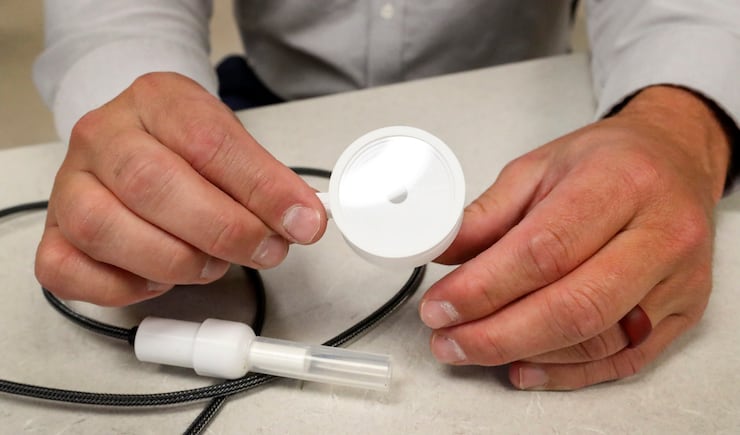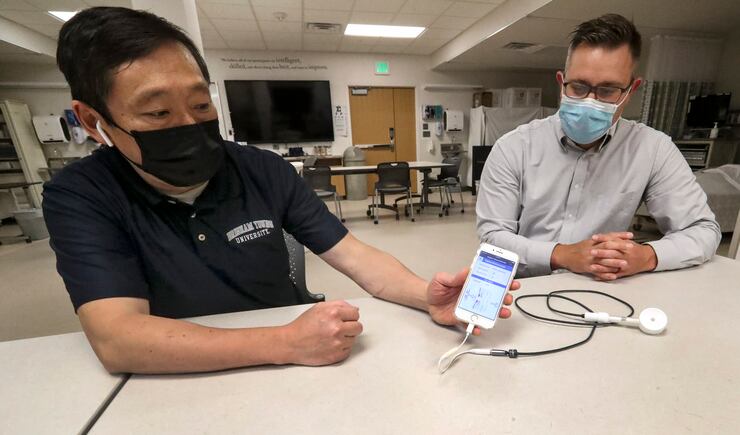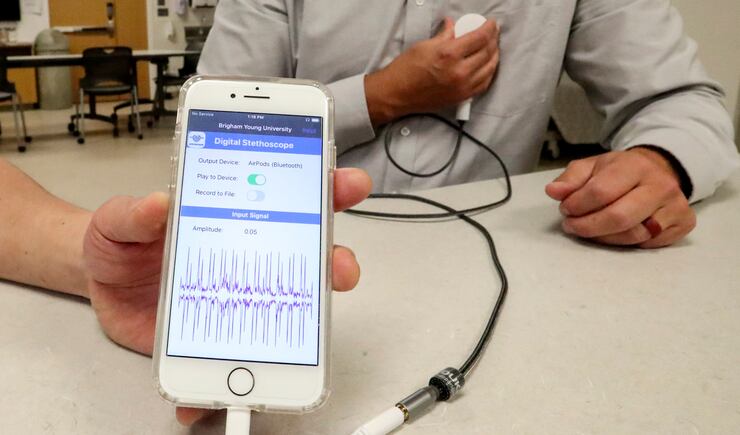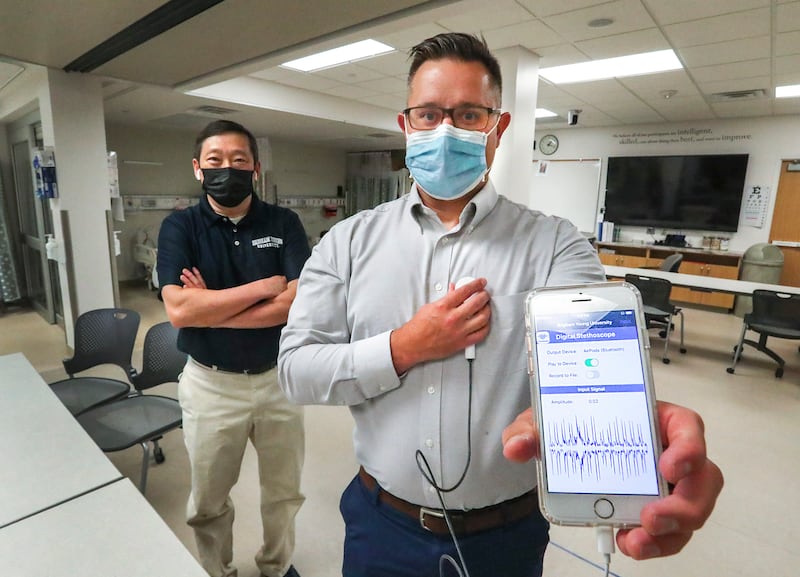PROVO — Two BYU professors have designed a Bluetooth stethoscope that lets health care workers listen to a patient’s heart and lungs from a distance — allowing them to wear personal protective equipment and stay safe while assessing someone who may have COVID-19.
The coronavirus pandemic has complicated assessing a patient’s heart and lungs as doing so requires practitioners to be in close proximity to someone with the virus. Not only is navigating a stethoscope a challenge while wearing PPE, being in close quarters with a patient to take said measurements heightens the risk of contracting the virus.
“It really became kind of a dilemma for me of ‘Do I put myself at risk or do I just not access my patient and put my patient at risk?’” said Craig Nuttall, an emergency practitioner and nursing professor at Brigham Young University.
It was a question he faced every day while working in an emergency room as coronavirus swept across the state.
That’s when Nuttall thought about adding a Bluetooth element to a digital 3D-printed stethoscope design that he was already working on with BYU information technology professor Chia-Chi Teng for a different project that had been interrupted by COVID-19.
Using an existing open-source 3D print design, the two added a microphone and Bluetooth capabilities to the design. Teng developed an app that captures the stethoscope’s audio and transmits it to a Bluetooth audio device — like headphones — and improves the sound quality. The app streams the sound live to a speaker or a pair of Bluetooth headphones.
“I direct the patient from 10 to 15 feet across the room at a safe distance while I’m wearing my PPE, I direct them on where to put that on their chest and we listen to their heart and lungs,” Nuttall said. “It’s been very beneficial for me in practice.”
He said he’s been using it since around the end of March.
The device can also record the sounds, allowing practitioners to send the recording elsewhere to get a second opinion if need be.



Teng said somewhere between five and 10 practitioners across a spectrum of medical disciplines are currently using the stethoscope and giving feedback.
They acknowledged that there are other Bluetooth stethoscopes on the market. However, they tend to be quite expensive and few have livestreaming capabilities.
Their stethoscope works as well as other “top of the line” devices and is far cheaper and more accessible to the general population thanks to the 3D-printed parts, Nuttall said.
He cited one stethoscope with Bluetooth capabilities currently on the market as an example, saying it costs about $250 dollars, which isn’t “an economical option,” especially when treating someone with infectious diseases where the device would need to be replaced repeatedly to avoid potential spread.
The materials for their stethoscope costs under $20 to make.
Teng said the device has even helped a BYU nursing student with a hearing disability. She was having trouble in her classes because the clinical stethoscope didn’t work with her hearing aids. Upon reaching out to the professors about the issue, their design was able to connect to her hearing aids making it the “equivalent to an air pod” which “worked like a charm,” Teng said.
Both professors emphasized that their design is the world’s to use. They didn’t develop it to make money. The stethoscope’s plans are open sourced and information to make one can be found on GitHub. The accompanying app that allows for live streaming and recording is available on Apple’s TestFlight.
Teng and Nuttall said they hope the design can go on to open doors in telemedicine and improve access to health care in a low cost, sustainable way in any area of the world.
“We want people to use it. We aren’t doing it for our benefit, we are doing it for everyone else’s — especially where COVID is getting really bad right now, especially in Utah and western states,” Nuttall said. “This is needed right? Every single day providers and nurses are making the decision of ‘Do I listen to my patient’s heart and lungs or do I keep myself and my family safe?’ This makes it possible to do both.”





